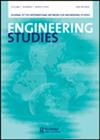构建北极智能交通系统:驯鹿、鱼类和工程道路
IF 1.3
3区 工程技术
Q2 EDUCATION, SCIENTIFIC DISCIPLINES
引用次数: 1
摘要
本文探讨了在北极测试智能交通系统(ITS)项目中人类与其他动物、技术和工程实践之间的关系。一般来说,道路的设计是为了提高运输的效率和可预测性。然而,在挪威的北极北部地区,动物有时会挑战这些美德。本文以戈夫曼的框架概念和卡伦的溢出概念为理论起点,探讨了交通工程师如何开发智能交通基础设施,并设想了在工程师的道路框架中包括动物和其他非人类的方法。工程师们首先要实施新的技术人工制品,这使他们能够以一种更容易管理的方式调查道路,使自然溢流到道路上。然而,这些人工制品不仅仅在工程师的框架中包含自然——工程师还设想人类,在这种情况下,驾驶者,改变他们的做法。因此,工程师们试图将动物置于一个特定的框架中,需要使用技术来组装自然与文化之间的新关系。在规划和发展基础设施时考虑到自然意味着重新组合一种特定的自然文化关系。因此,文章指出,要改造自然,就必须改造文化。本文章由计算机程序翻译,如有差异,请以英文原文为准。
Framing Intelligent Transport Systems in the Arctic: Reindeer, Fish and the Engineered Road
The article explores the relationship between humans and other animals, technology, and engineering practices in a project testing Intelligent Transport Systems (ITS) in the arctic. Generally, roads are engineered to promote efficiency and predictability for transport. However, in the arctic northern region of Norway, animals sometimes challenge these virtues. Using Goffman’s notion of frames and Callon’s concept of overflow as theoretical starting points, the article explores how transport engineers develop intelligent transport infrastructure and envision ways of including animals and other non-humans in the engineers’ framing of the road. The engineers first and foremost implement new technological artefacts, which allow them to survey the road in a manner which makes nature’s overflows onto the road more manageable. However, these artefacts do not merely contain nature in the engineers’ frame—the engineers also envision humans, in this case, motorists, to change their practices. As such, the engineers’ attempts to contain animals in a particular frame entail using technology to assemble a new relationship between nature and culture. Taking nature into account when planning and developing infrastructure means reassembling a particular nature-culture relationship. Thus, the article points out that in order to engineer nature, it is also necessary to engineer culture.
求助全文
通过发布文献求助,成功后即可免费获取论文全文。
去求助
来源期刊

Engineering Studies
ENGINEERING, MULTIDISCIPLINARY-HISTORY & PHILOSOPHY OF SCIENCE
CiteScore
3.60
自引率
17.60%
发文量
12
审稿时长
>12 weeks
期刊介绍:
Engineering Studies is an interdisciplinary, international journal devoted to the scholarly study of engineers and engineering. Its mission is threefold:
1. to advance critical analysis in historical, social, cultural, political, philosophical, rhetorical, and organizational studies of engineers and engineering;
2. to help build and serve diverse communities of researchers interested in engineering studies;
3. to link scholarly work in engineering studies with broader discussions and debates about engineering education, research, practice, policy, and representation.
The editors of Engineering Studies are interested in papers that consider the following questions:
• How does this paper enhance critical understanding of engineers or engineering?
• What are the relationships among the technical and nontechnical dimensions of engineering practices, and how do these relationships change over time and from place to place?
 求助内容:
求助内容: 应助结果提醒方式:
应助结果提醒方式:


